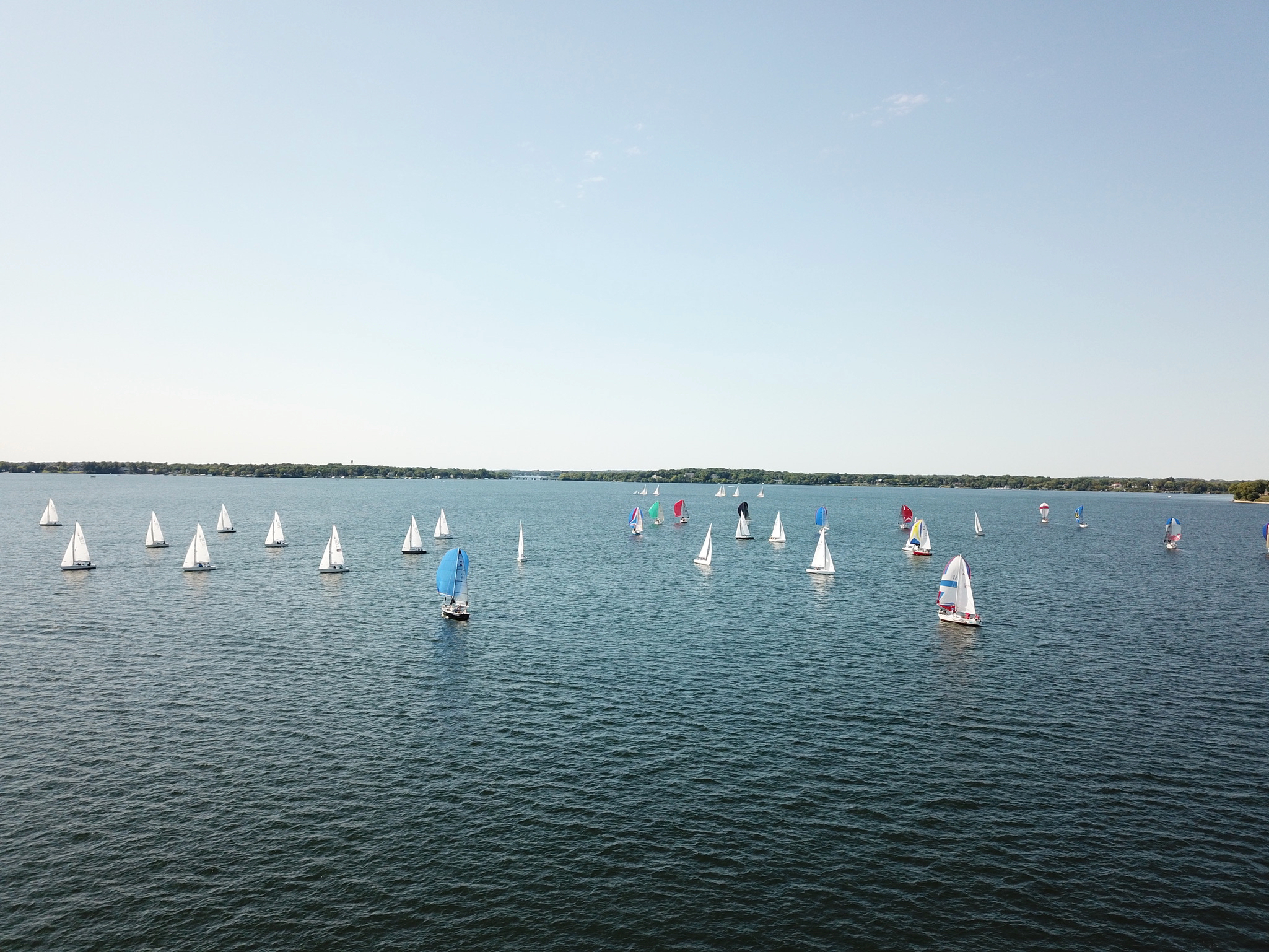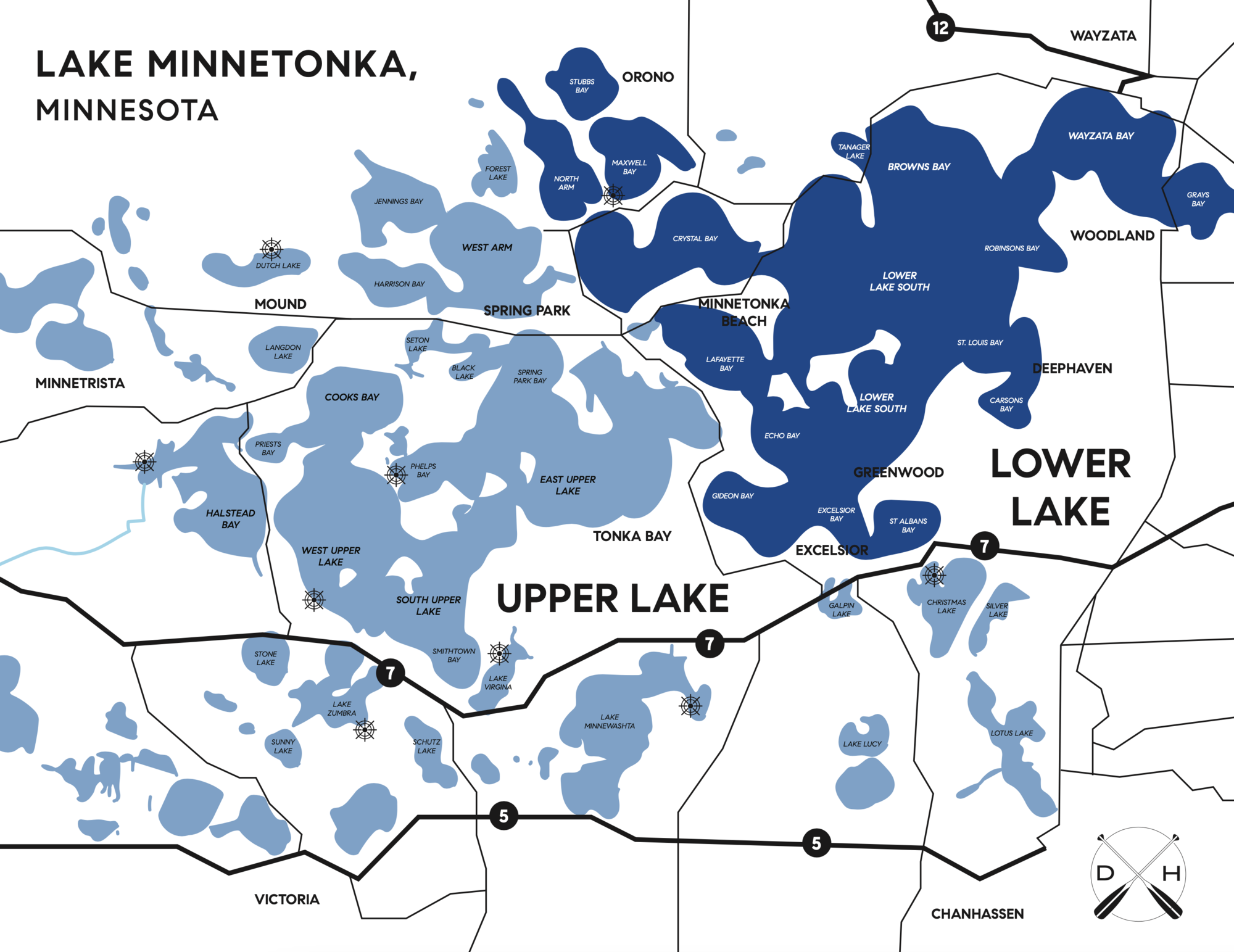UNDERSTANDING LAKE WATER QUALITY GRADES
Lake Minnetonka is a unique body of water because each of the forty-two bays varies in depth, surface area, and water quality. The Minnehaha Creek Watershed District began its water quality grading method in 1989. Three factors combine to indicate the quality of the lake. However, additional factors include precipitation, aquatic plants, fisheries, harmful chemicals, and over-use to determine the lake's grade. The MCWD uses lake grades to compare waters in the same area.
THE 3 WATER QUALITY MEASUREMENTS:
- TP is the abbreviation of total phosphorus. Total phosphorus usually is a limited food source (nutrient) for algae and plants. An increase in total phosphorus relates closely to increased algae, frequency of algal blooms, and an increased quantity of blue-green algae.
- CHL-A is the abbreviation of chlorophyll-a. Chlorophyll-a is the green pigment in algae and plants essential to photosynthesis. A measure of chlorophyll-a in the water estimates the algal abundance.
- SD is the abbreviation of Secchi disk depth or water clarity. The lower the Secchi disk is visible, the clearer the water appears.
THE GRADE DISTRIBUTION IS BROKEN DOWN INTO LETTERS A-F:
- A: has a relative ranking of 90% and up clarity. Bays with this distinction are in the top 10% of the cleanest bays on Lake Minnetonka. They are often described as crystal clear and beautiful. Lakes with an A grade are exceptional and can be enjoyed recreationally without question or hesitation.
- B: has a relative ranking between 70-90% clarity. Described as generally good quality, but algae may limit swimming toward the end of the summer.
- C: has a relative ranking between 30-70% clarity. Described as average quality, where swimming, boating, and fishing may be undesirable relatively early in the season. Algae blooms occasionally in these bodies of water.
- D: has a relative ranking between 10-30% clarity. Described to have severe algae problems, where people are generally not interested in recreation on these lakes.
- F: has a relative ranking in the lowest 10% clarity. Bays with this distinction are in the lowest 10% of cleanest bays on Lake Minnetonka. Described as not enjoyable, lakes with this quality have severe limitations to recreational use.
Explore below to learn more about the water quality in your favorite Lake Minnetonka Bay.
IMPROVING LOW-WATER QUALITY LAKE GRADES
Raising a lake's grade requires additional work. It may mean changes to drainage patterns, filtration, or stormwater detention. And not all lakes have the same potential for improvement. For example, shallow lakes can have only so much Secchi disk visibility. Everyone plays a role in helping improve the water quality. For example, your home and yard may contribute to the poor quality of a neighborhood lake. Preventing pet waste, leaves, chemicals, and runoff from entering storm drains can help keep your lake or stream clean. The LMCD has a lakeshore owner guide answering frequently asked questions in aiding the transition to a lake-friendly lifestyle and cleaner lakes.
Source Minnehaha Creek Watershed District ®
Source Water Depth Map of Lake Minnetonka - Minnehaha Creek Watershed District ®


